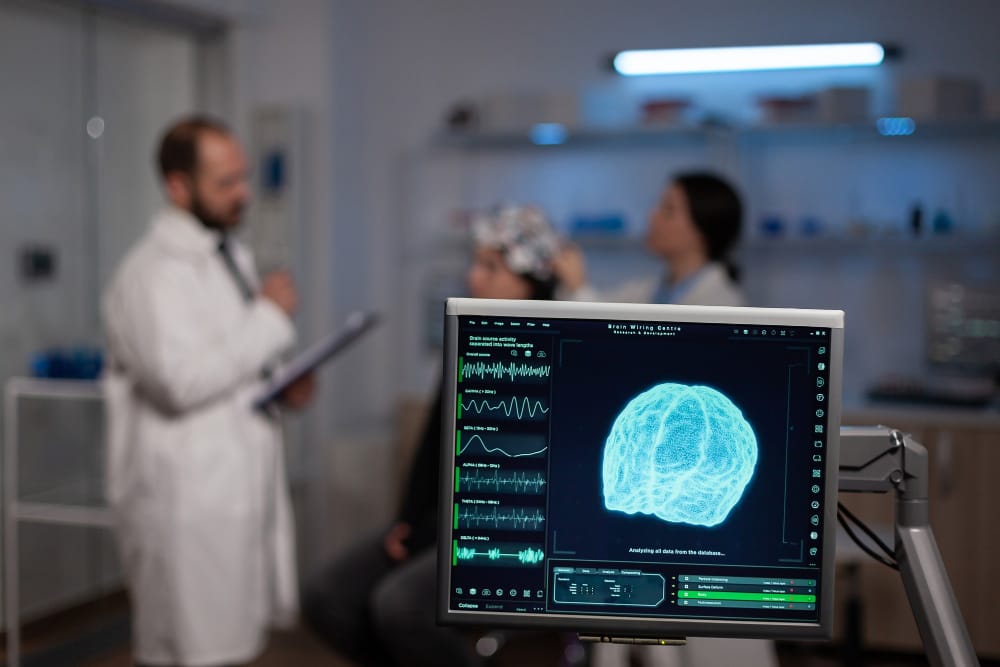
Brain-computer interfaces (BCIs) are an exciting and rapidly evolving technology that allows individuals to control devices using only their thoughts. By directly connecting the brain to a computer, BCIs can provide a means of communication and control for individuals with disabilities, such as paralysis, who may not be able to use traditional input devices like keyboards or mice.
One way that BCIs can be used to control devices is through the use of electroencephalography (EEG) sensors, which detect the electrical activity of the brain. By analyzing this activity, BCIs can interpret a user’s intentions and translate them into commands for a computer or other device. This can allow individuals to type, navigate a cursor, or even control a wheelchair using just their thoughts.
Another method for controlling devices with BCIs is through the use of invasive electrodes, which are placed directly on the surface of the brain. While more invasive than EEG sensors, these electrodes can provide a higher level of control and precision, allowing users to perform more complex tasks, such as controlling prosthetic limbs or even playing video games.
BCIs can also be used to control devices in virtual reality (VR) environments. By using BCIs to track a user’s brain activity, VR systems can adjust the virtual environment in real-time based on the user’s thoughts and intentions. This can create a more immersive and interactive experience for users, allowing them to control their virtual surroundings with unprecedented precision.
BCIs can also be used for communication purposes. Individuals with conditions such as amyotrophic lateral sclerosis (ALS) or locked-in syndrome, which severely limit their ability to communicate verbally or physically, can use BCIs to type messages, control speech synthesizers, or even communicate through a virtual avatar.
BCIs can also be used to enhance cognitive abilities, such as memory and attention. By monitoring brain activity and providing real-time feedback, BCIs can help individuals improve their cognitive function and performance in tasks such as learning, memory retention, and decision-making.
One of the most exciting applications of BCIs is in the field of neuroprosthetics, where BCIs are used to control artificial limbs, exoskeletons, or other robotic devices. By connecting the brain directly to these devices, individuals can regain lost motor function and autonomy, allowing them to perform everyday tasks with greater ease and independence.
BCIs can also be used to improve the efficiency and safety of devices in high-risk environments, such as in the operation of machinery, vehicles, or aircraft. By monitoring a user’s brain activity and detecting signs of fatigue, distraction, or stress, BCIs can provide real-time feedback and assistance to help prevent accidents and improve performance.
The development of BCIs has the potential to revolutionize healthcare and rehabilitation for individuals with disabilities. By providing a direct and intuitive means of communication and control, BCIs can help individuals regain independence, improve their quality of life, and participate more fully in society.
The use of BCIs to control devices represents a major advancement in human-computer interaction and holds great promise for improving the lives of individuals with disabilities, enhancing cognitive abilities, and creating new opportunities for communication, control, and adaptation in a rapidly changing world. As technology continues to evolve, the potential applications of BCIs are virtually limitless, and the future holds great promise for this transformative technology.